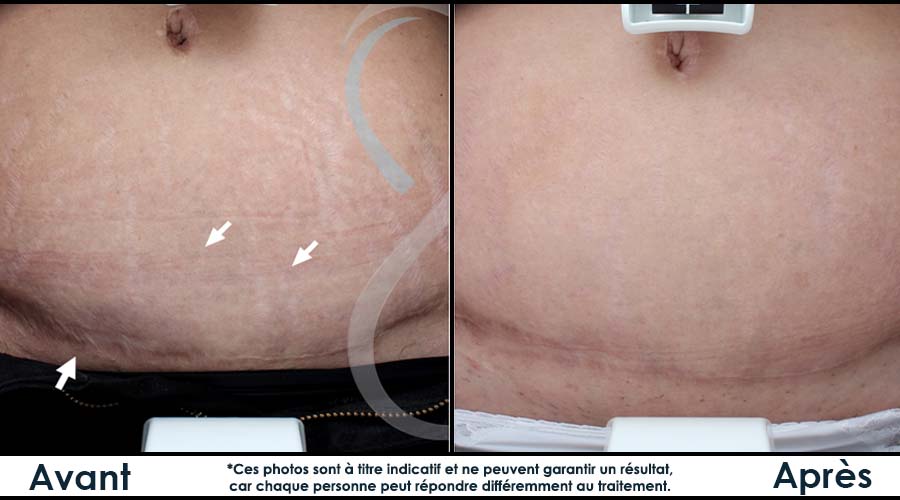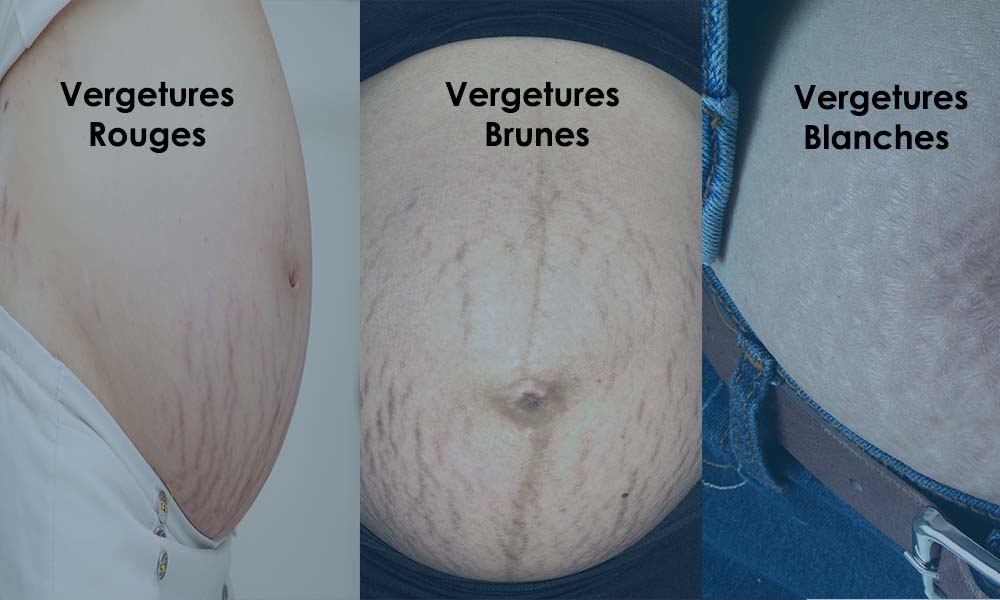Stretch Marks
Effective treatments for white, brown, red or streak-like stretch marks— we’ve got you covered.
Post-Treatment Stretch Mark Results

Our Approach to Treating Stretch Marks
1
An initial consultation and identification of the types of stretch marks to be treated.
2
Proposal of an effective and customized treatment plan.
3
Treatments with several follow-ups to ensure its effectiveness.
What Are Stretch Marks?
How do stretch marks form and why do some people get them and others don’t?
When a region of the body rapidly increases in volume, such as during pregnancy, the collagen fibers found in the dermis do not have time to adjust. This results in their rupture. We can compare this rupture to a tear, similar to when we put on a piece of clothing that is too tight. It will tear over time if we gain weight. Collagen fibers are responsible for the suppleness and elasticity of the skin. When the skin is stretched, it is more difficult to adapt and a tear in the collagen fibers will cause the appearance of stretch marks.
Other than gaining weight, some stretch marks can be the result of an underlying chronic disease, such as Cushing’s syndrome. The adrenal glands can become overactive and release the stress hormone cortisol, which decreases the production of collagen.
Athletes and those who often increase their muscle mass tend to produce a lot of cortisol.
There are also stretch marks that appear during puberty and during pregnancy, two periods when there is a significant increase in hormones.
At first, the stretch marks have a reddish-purple color and are inflammatory. They may have a long, streaky shape. Over time, they whiten and/or their color resembles that of the skin. In most cases, stretch marks are permanent. The most affected areas are the breasts, belly, arms, buttocks, thighs and legs. Nearly 80% of women say they have stretch marks, 50 to 70% of which appear after a first pregnancy.
Types of Stretch Marks

Our Approach
An in-depth analysis of the areas affected by stretch marks allows us to determine the stretch mark’s stage, width, depth and color. Treatments done on early stretch marks give better results.
In the early stages, when the stretch marks are red, purplish and brown, it is possible to use lasers and topical medicated creams to correct their appearance. In more advanced stages, when they have whitened, it is necessary to use more invasive support techniques, configured according to their width and depth.
It should not be forgotten that a stretch mark is like a scar on the skin. Several techniques and technologies are needed in order to be able to denature scar collagen up to depths of 5mm. Shallower depths will also be treated in order to obtain better smoothing of the skin, both in-depth and on the surface. Optimal results can be achieved when we combine resurfacing and energy techniques because the inflammatory process and the regeneration obtained are better.
Platelet-rich plasma injections can be used as a collagen stimulator in combination with resurfacing techniques. It all depends on the extent of the stretch marks and when they were taken care of. Treated in time, the results can be very impressive, even so that some may disappear completely.



